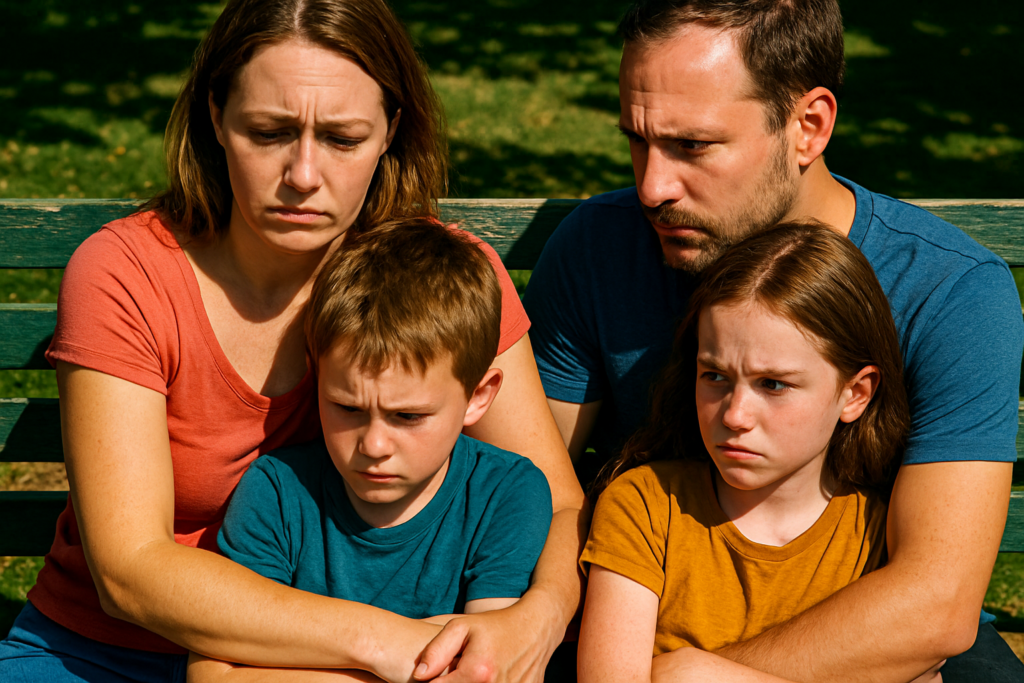Navigating the complexities of a blended family can be both rewarding and challenging. As a parent in a blended family, I understand the importance of finding effective ways to reduce stress and foster harmony within the household.
In this article, I’ll explore mindfulness techniques that can help blended families cultivate a sense of calm and connection amidst the daily chaos. By incorporating mindfulness practices into your family routine, you can create a supportive environment where open communication and understanding thrive.
From simple breathing exercises to mindful listening strategies, these techniques offer practical tools for managing conflicts and strengthening bonds. Join me as we delve into the world of mindfulness and discover how it can transform the dynamics of blended families, one mindful moment at a time.
Understanding Mindfulness Techniques for Blended Families
Navigating a blended family can be challenging, but by embracing mindfulness techniques, families can cultivate harmony and reduce stress. Mindfulness involves being fully present in the moment, which can enhance communication, conflict resolution, and overall family connections.
As a parent in a blended family, incorporating mindfulness practices into daily life can positively impact the dynamics of the household and create a more supportive environment for everyone involved.
Benefits of Practicing Mindfulness Together
Practicing mindfulness as a family can yield numerous benefits that enhance the overall well-being of everyone involved. Here are some advantages of incorporating mindfulness techniques into your daily routine:
Enhancing Family Communication
Engaging in mindfulness practices together can significantly improve family communication. When each family member is fully present in the moment, it fosters active listening and genuine understanding.
This heightened awareness allows for more meaningful interactions and helps prevent misunderstandings. By practicing mindfulness as a unit, we can strengthen our bonds through open and effective communication channels.
Implementing Mindfulness Techniques in Daily Life
Enhancing our daily routines with mindfulness practices can have a profound impact on reducing stress and improving relationships within blended families. By incorporating simple techniques into our everyday lives, we can create a more harmonious and connected household.
Here are some practical ways to implement mindfulness techniques that can benefit the entire family:
- Morning Mindfulness: Start the day with a mindful practice, such as a 5-minute breathing exercise or setting positive intentions for the day. By taking this time for self-reflection and grounding, each family member can approach the day with clarity and a sense of calm.
- Mindful Meal Times: Encourage mindful eating by sharing meals together without distractions like phones or TVs. Teach children to savor each bite, appreciate the food on their plates, and engage in meaningful conversations during meal times.
- Mindful Communication: Practice active listening by giving each family member your full attention when they speak. Encourage open and honest communication by expressing gratitude, empathy, and understanding in your interactions.
- Mindful Activities: Engage in mindful activities as a family, such as nature walks, yoga sessions, or creative projects. These shared experiences can deepen family bonds, reduce stress, and promote a sense of connection among family members.
- Bedtime Reflection: End the day with a moment of reflection or gratitude practice. Encourage each family member to share one positive aspect of their day or something they are grateful for, fostering a sense of contentment and peace before bedtime.
Incorporating mindfulness techniques into daily life can transform the way blended families interact, communicate, and support each other. By fostering a culture of mindfulness within the household, families can navigate challenges with greater ease, promote understanding, and create a nurturing environment for all members to thrive.
Challenges and Solutions in Practicing Mindfulness as a Blended Family
Exploring mindfulness as a blended family comes with its own set of challenges that require thoughtful solutions to navigate effectively. Here, we delve into some common obstacles faced by blended families when practicing mindfulness and offer practical strategies to overcome them.
Balancing Different Perspectives
When integrating mindfulness into a blended family dynamic, one of the primary challenges is balancing the diverse perspectives and backgrounds of each family member. It’s crucial to recognize and respect the unique viewpoints and values that each individual brings to the family unit while fostering a sense of unity through mindfulness practices.
Solution: Cultivating Empathy and Understanding
To address this challenge, fostering empathy and understanding among family members is key. By encouraging open communication and actively listening to one another without judgment, family members can develop a deeper understanding of each other’s viewpoints, promoting harmony and unity within the blended family.
Managing Conflicting Schedules
Blended families often face the issue of managing conflicting schedules, making it challenging to find time for shared mindfulness activities. Juggling different commitments and priorities can create barriers to practicing mindfulness together as a family.
Solution: Creating a Consistent Mindfulness Routine
A practical solution to this challenge is to establish a consistent mindfulness routine that accommodates everyone’s schedules. Setting aside dedicated time each day for mindfulness practices, such as mindful breathing exercises or guided meditations, can help foster a sense of togetherness and relaxation within the family.
Addressing Resistance to Change
Resistance to change is another hurdle that blended families may encounter when introducing mindfulness practices. Some family members may be hesitant to embrace new routines or may struggle to see the value of mindfulness in enhancing family dynamics.
Solution: Leading by Example and Encouraging Participation
To overcome resistance to change, leading by example can be a powerful approach. By demonstrating the benefits of mindfulness through personal practice and emphasizing its positive impact on family relationships, reluctant members may be more inclined to participate and experience the benefits firsthand.
Navigating the challenges of practicing mindfulness as a blended family requires patience, understanding, and a collaborative effort to create a harmonious and supportive environment where every member feels valued and connected. By implementing these solutions, families can overcome obstacles and cultivate a culture of mindfulness that nurtures strong bonds and promotes emotional well-being.




